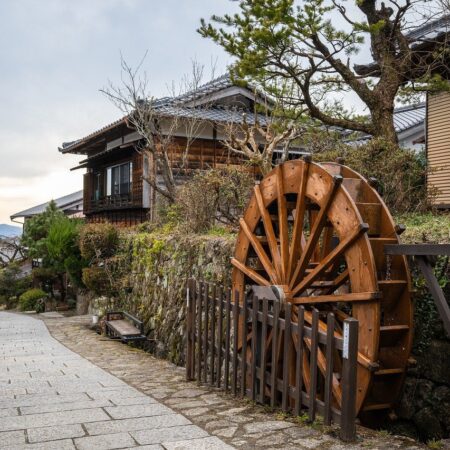Japan is an island country that has engaged in exchanges with various countries since ancient times. Among these, the relationship with China is particularly deep, not merely through simple exchanges, but also through actions such as sending delegations to learn about the Chinese political system, and even having a history of warfare between the two nations. In this session, we will introduce the history of exchanges between Japan and China, a country with which Japan has a profound relationship.
Heian Period (794-1185): The Dawn of Cultural Exchange and the Influence of the Tang Dynasty
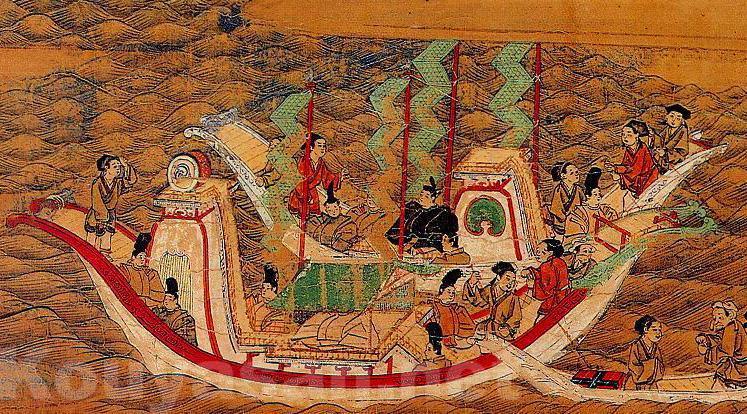
Historical Background
The Heian Period was a time when the influence of Chinese culture, especially that of the Tang Dynasty (618-907), was most pronounced in Japan. During this era, Japan actively adopted Chinese politics, culture, religion, and more through its missions to Tang China.
Major Events of the Heian Period
The missions to Tang China played a crucial role in transmitting China's latest culture and academia to Japan. The construction of Heian-kyō, influenced by Chang'an, the capital of Tang, the introduction of Buddhism, and the exchange of various cultural elements such as Chinese poetry and painting techniques were significant. However, by the end of the 9th century, as the Tang Dynasty declined, these missions ceased, and Japan began to move towards developing its own unique culture.
(Image citation: 高野山の見どころ観光事務局)
Kamakura Period (1185-1333): The Era of the Samurai, the Prosperity of the Song Dynasty, and the Mongol Invasions
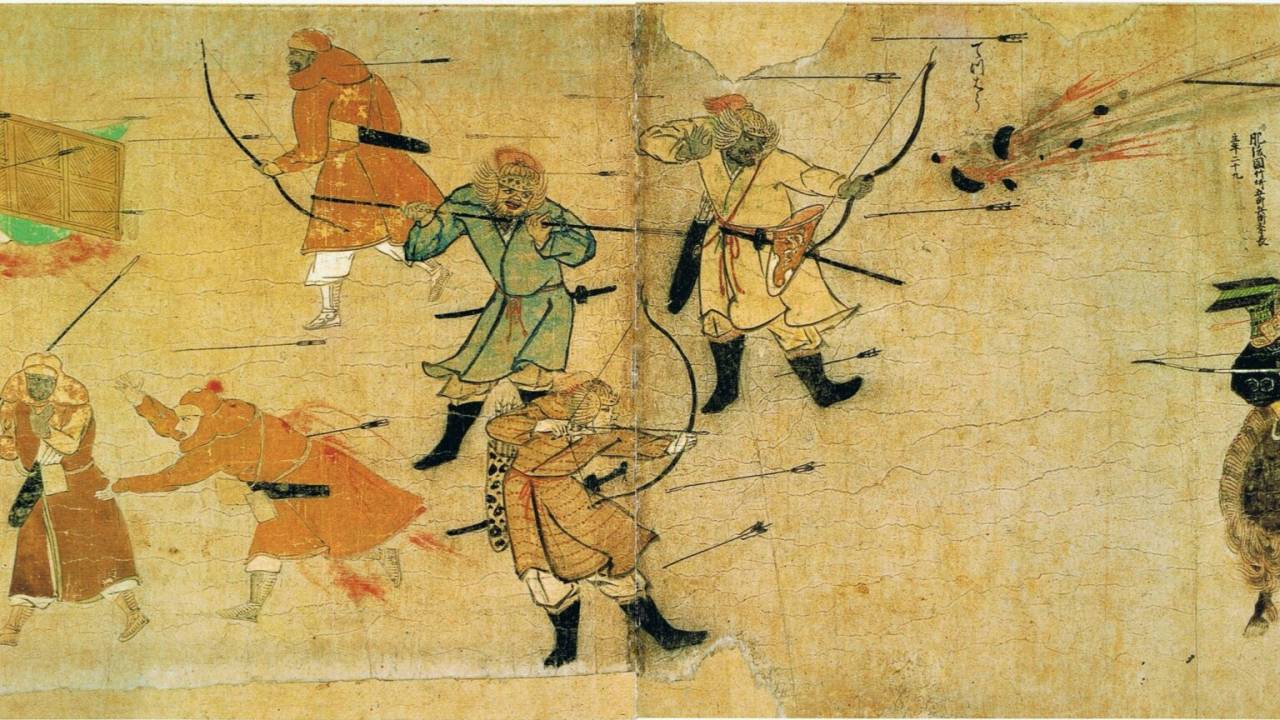
Historical Background
The Kamakura Period was the era when samurai first took the reins of political power, characterized by its relations with the Song Dynasty (960-1279). During this period, China and Japan mainly interacted through trade. It was also the time when Japan faced two invasions by the Mongol Empire of Yuan, which had conquered China.
Main Events of the Kamakura Period
However, after defeating the Song, the Mongol Empire, known as Yuan, which had unified China, launched two attacks on Japan as part of its territorial expansion. These events are known as the Mongol invasions of Japan (in 1274 and 1281). The Yuan forces attacked Hakata, but the Japanese military successfully repelled the Yuan troops twice, thanks to their remarkable resilience and the advantageous seasonal winds. Nonetheless, these Mongol invasions heightened the tensions between the two nations.
(Image citation: Japaaan)
Muromachi Period (1336-1573): Mutual Influence of Trade and Culture
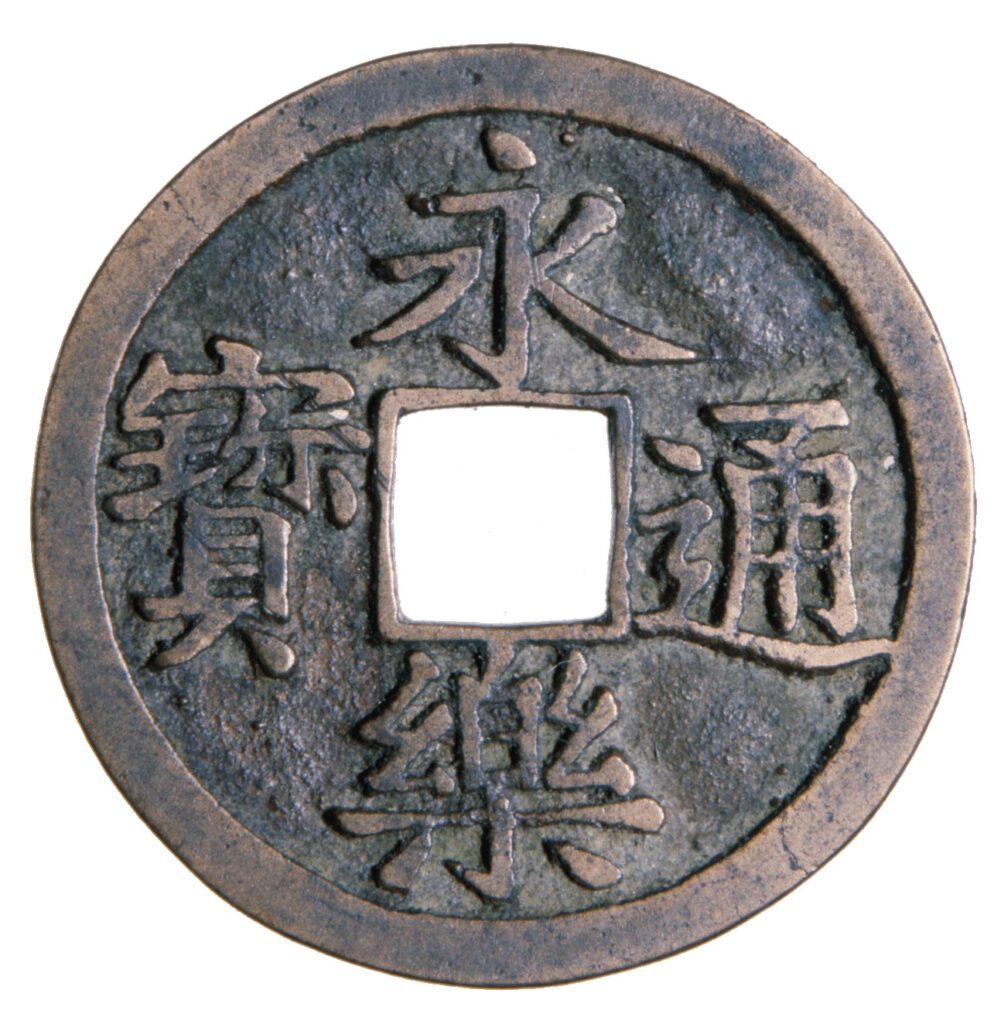
Historical Background
Muromachi Period was characterized by exchanges between Japan and China primarily through trade between Muromachi Shogunate and the Ming Dynasty (1368-1644). The interactions during this period had a significant impact on Japanese culture and society.
Main Events of the Muromachi Period
Trade with Ming was a crucial element supporting the financial foundation of the Muromachi Shogunate, with Chinese copper coins, porcelain, silk, and books being imported into Japan. Particularly, the importation of Yongle Tongbao (as shown in the image above), a type of Chinese copper coin, significantly accelerated the development of Japan's monetary economy. In return, silver and sulfur were exported from Japan to China. Cultural exchanges during this period deeply influenced Japanese tea culture and arts, especially the Chinese impact evident in Japanese tea utensils and artworks. Moreover, many monks and scholars traveled to China for study during this era, further deepening the cultural exchanges between the two nations.
(image citation: 貨幣博物館)
Edo Period (1603-1868): National Isolation and Limited Exchanges
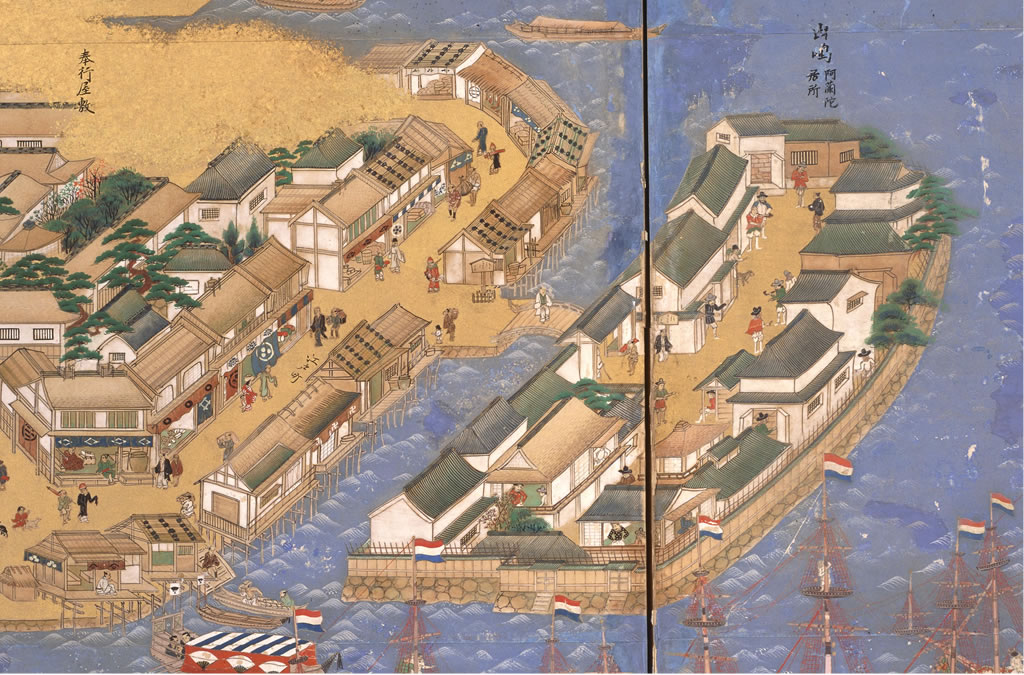
Historical Background
The Edo Period was marked by Japan's national isolation policy, severely limiting international exchanges. The government decided to adopt the isolation policy because it deemed Christianity, introduced from Europe, unfavorable for governing Japan. The main countries Japan interacted with were the Netherlands and China. Throughout most of this period, China was under the rule of the Qing Dynasty (1644-1912).
Main Events of the Edo Period
Japan adopted a policy of national isolation, significantly restricting direct exchanges with foreign countries. However, trade with the Netherlands was permitted through Dejima in Nagasaki, and limited trade continued with the Qing Dynasty as well. During this time, Dutch and Chinese books and culture continued to flow into Japan, influencing the fields of academia and culture. Notably, Dutch medical knowledge, especially anatomy, and Chinese Confucianism had a significant impact and were deeply studied by intellectuals of the Edo Period.
(image citation: ナガジン!)
Meiji Era (1868-1912): Japan's Modernization and New Relationship with Qing China
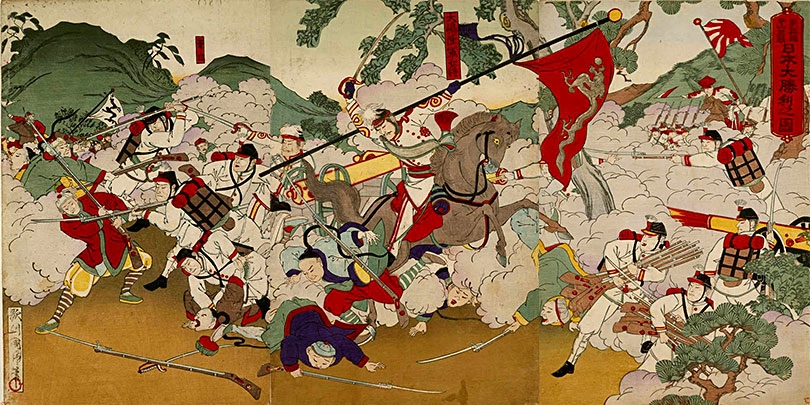
Historical Context
The Meiji Period was period of rapid Westernization and modernization in Japan. During this time, China was still under the rule of the Qing Dynasty, but it was also a period when Western powers' influence was increasing.
Main Events of the Meiji period
Following the Meiji Restoration, Japan strengthened its national power by actively adopting Western technology, systems, and philosophy. The relationship between Japan and China entered a phase of competition on the international political stage during this era. The First Sino-Japanese War (1894-1895) was a significant event of this period, resulting in Japan's victory and the annexation of Taiwan as Japanese territory. This war established Japan's status as a modern nation and highlighted the delay in modernization in China.
(image citation: コトバンク)
Taisho Era (1912-1926): A New Phase in Japan-China Relations and Cultural Exchanges
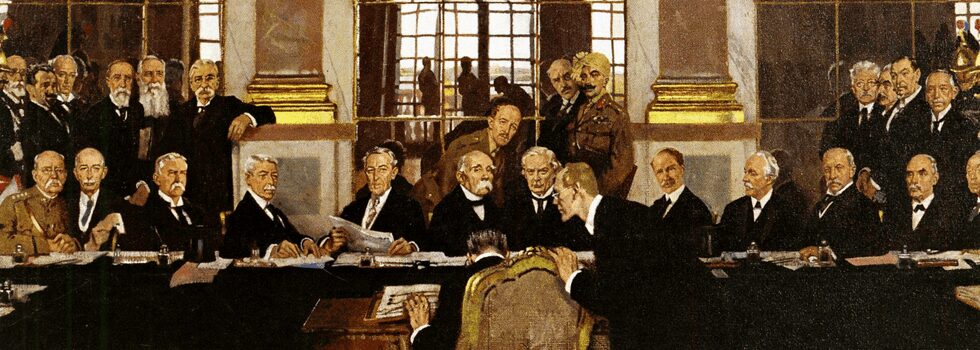
Historical Background
The Taisho Era was a period when Japan had established a firm position on the international stage and was seeking a new role in the aftermath of World War I and the international order. During this era, China was going through a turbulent period following the collapse of the Qing Dynasty due to the Xinhai Revolution.
Main Events of the Taisho Era
Cultural exchange was a distinctive feature of Japan-China relations during the Taisho Era. Japanese culture, especially literature and philosophy, influenced the New Culture Movement in China, leading to active exchanges among intellectuals of both countries.
However, there were political tensions during this period. At the Paris Peace Conference after World War I, Japan strengthened its demands on China, which resulted in increased anti-Japanese sentiments within China. Additionally, Japan's stance on the Shandong Problem had an impact on Japan's image in the international community.
(image citation: テンミニッツTV)
The Showa Era (1926-1989): An Era of Dramatic Changes and Conflicts
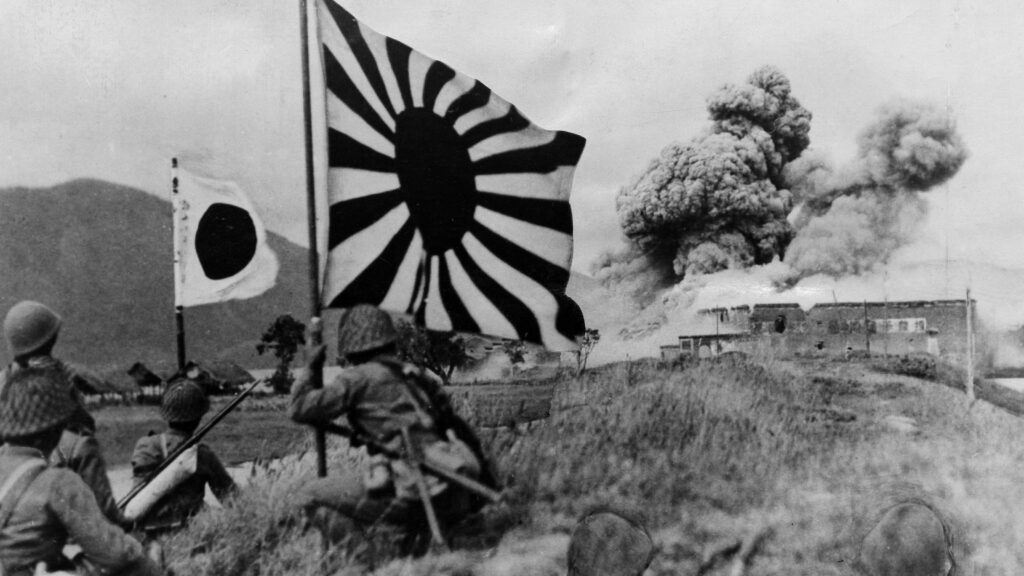
Historical Background
The Showa Era marked a tumultuous period in the relationship between Japan and China. During this era, China experienced significant political changes, including efforts towards national unity, the Second Sino-Japanese War, and the rise of the Communist Party leading to the establishment of the People's Republic of China.
Major Events of the Showa Era
The outbreak of the Second Sino-Japanese War in 1937 marked one of the most tense periods in the relationship between the two nations. This war, characterized by Japan's military actions and subsequent occupation within China, had a profound impact and contributed to the enduring anti-Japanese sentiment among the Chinese populace.
Following Japan's defeat in World War II, there was a temporary improvement in relations between the two countries. However, the onset of the Cold War led to China's communist transformation, while Japan strengthened its alliance with the United States. This shift resulted in new political tensions between Japan and China.
In the 1970s, relations between Japan and China began to gradually improve. The normalization of diplomatic relations in 1972 marked a significant turning point in their bilateral relationship. Subsequently, cooperation in various fields, especially in the economic domain, became a cornerstone of their interaction.
(image citation: PRESIDENT Online)
Summary
How was it? We have looked back at the history of Japan's interactions with China.
Chinese influence can still be observed in Japanese culture. Traditional arts such as Chinese poetry and calligraphy continue to be passed down to new generations and are regarded as essential elements of Japanese culture and education. On the other hand, from the Taisho era to the Showa era, Japan-China relations underwent significant changes, ranging from cultural exchanges to serious military conflicts, and eventually normalization of relations after the war. These transitions have had a profound impact on the geopolitical balance in East Asia and continue to influence today's international relations.
In this way, the history of Japan-China relations has evolved complexly in various aspects, including politics, economics, and culture. From ancient times to modern times, the relationship between the two countries has been characterized by periods of friendship as well as military conflicts, always holding a significant position in the history of East Asia.



